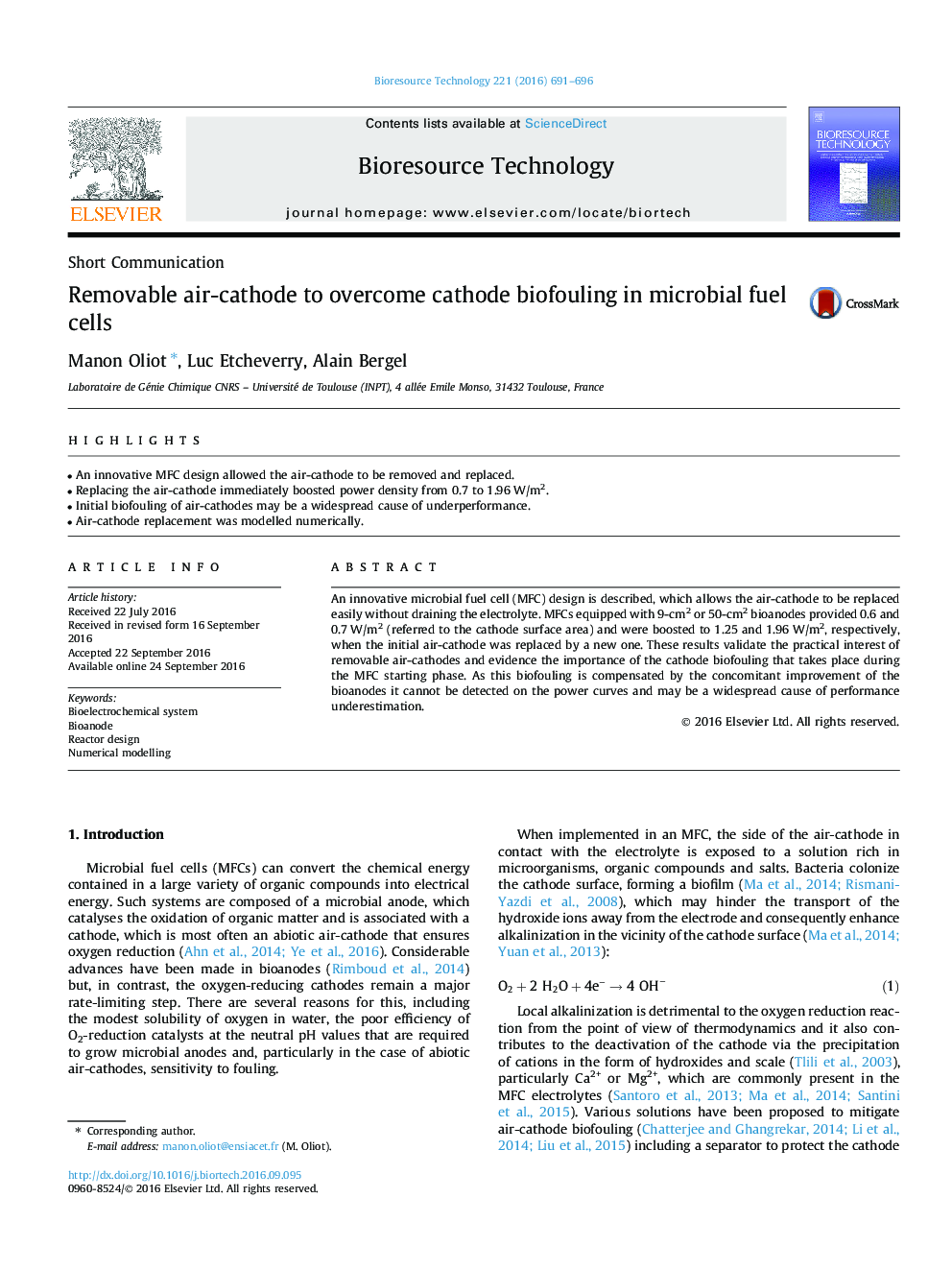| Article ID | Journal | Published Year | Pages | File Type |
|---|---|---|---|---|
| 4998114 | Bioresource Technology | 2016 | 6 Pages |
â¢An innovative MFC design allowed the air-cathode to be removed and replaced.â¢Replacing the air-cathode immediately boosted power density from 0.7 to 1.96 W/m2.â¢Initial biofouling of air-cathodes may be a widespread cause of underperformance.â¢Air-cathode replacement was modelled numerically.
An innovative microbial fuel cell (MFC) design is described, which allows the air-cathode to be replaced easily without draining the electrolyte. MFCs equipped with 9-cm2 or 50-cm2 bioanodes provided 0.6 and 0.7Â W/m2 (referred to the cathode surface area) and were boosted to 1.25 and 1.96Â W/m2, respectively, when the initial air-cathode was replaced by a new one. These results validate the practical interest of removable air-cathodes and evidence the importance of the cathode biofouling that takes place during the MFC starting phase. As this biofouling is compensated by the concomitant improvement of the bioanodes it cannot be detected on the power curves and may be a widespread cause of performance underestimation.
